Everything you need to know about everyone’s favorite fall squash…pumpkins! Different varieties, storage tips, and nutritional info for pumpkin!
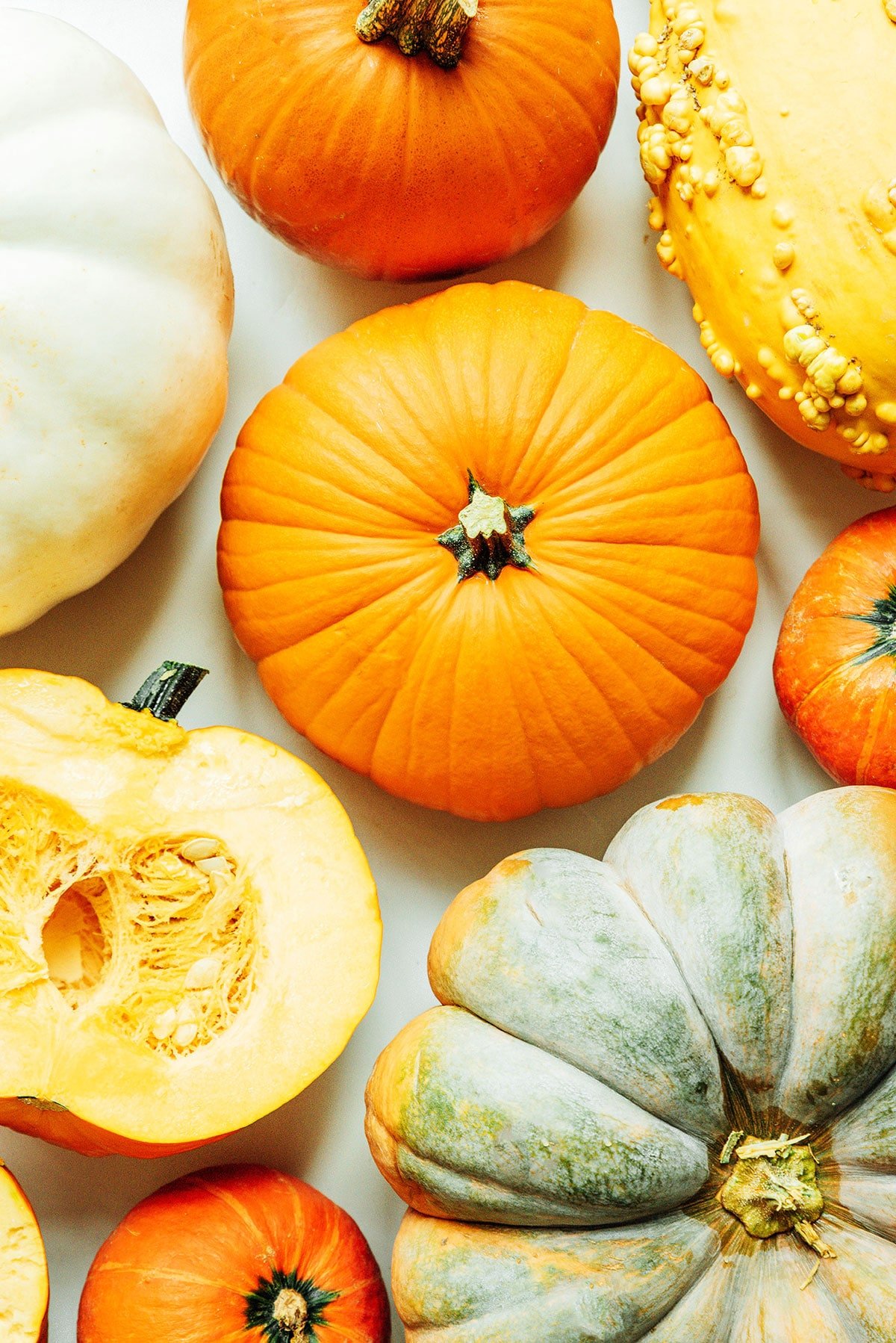
The American relationship with pumpkins is an odd one. While we rarely buy them to eat, pumpkins are still one of the most popular crops grown in America, largely because of our desire to carve faces into them.
Some traditions are just so odd when you think about them…but I digress.
Through history and tradition and lattes, pumpkins have established themselves as the quintessential autumn squash of America, so let’s delve into the world of pumpkins!
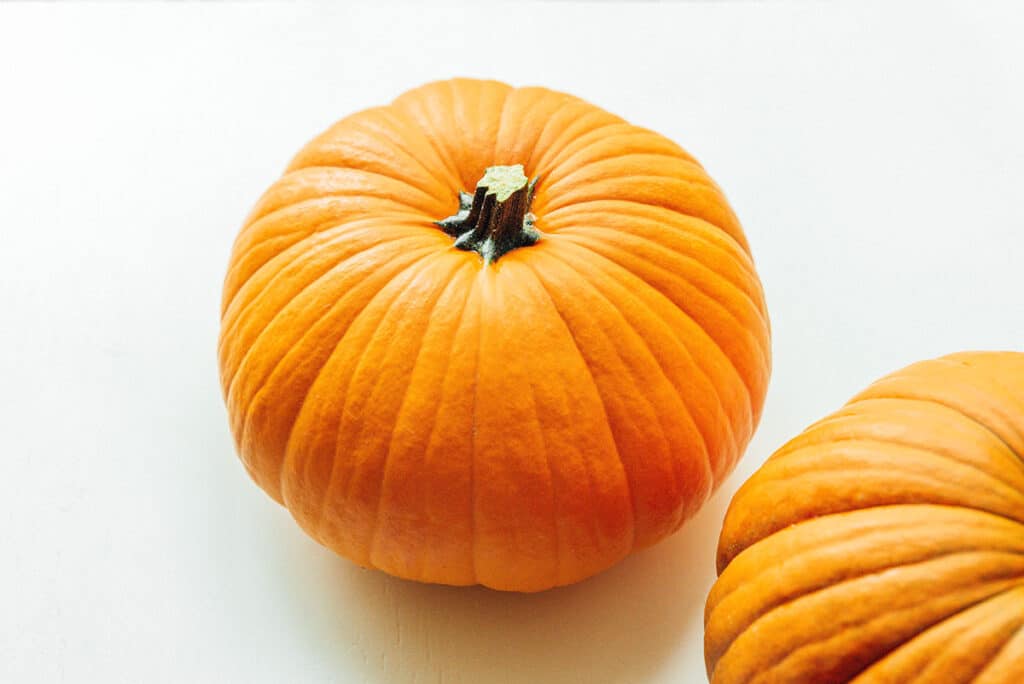
How to Pick the Perfect Pumpkin
Pumpkin is a winter squash, meaning it’s commonly harvested in the fall. In contrast to summer types of squash with its thin skin (like zucchini), winter squash has a thick skin that enables it to be stored for months.
So how do you pick the perfect pumpkin? Well that depends on what you’re intending to do with the pumpkin! If you’re going for the classic orange Jack-O-Lantern variety, look for a pumpkin with a consistent color that’s free from scratches. Flip it over and gently press the bottom. If it gives, the pumpkin ain’t fresh. And a green stem means the pumpkin was picked recently.
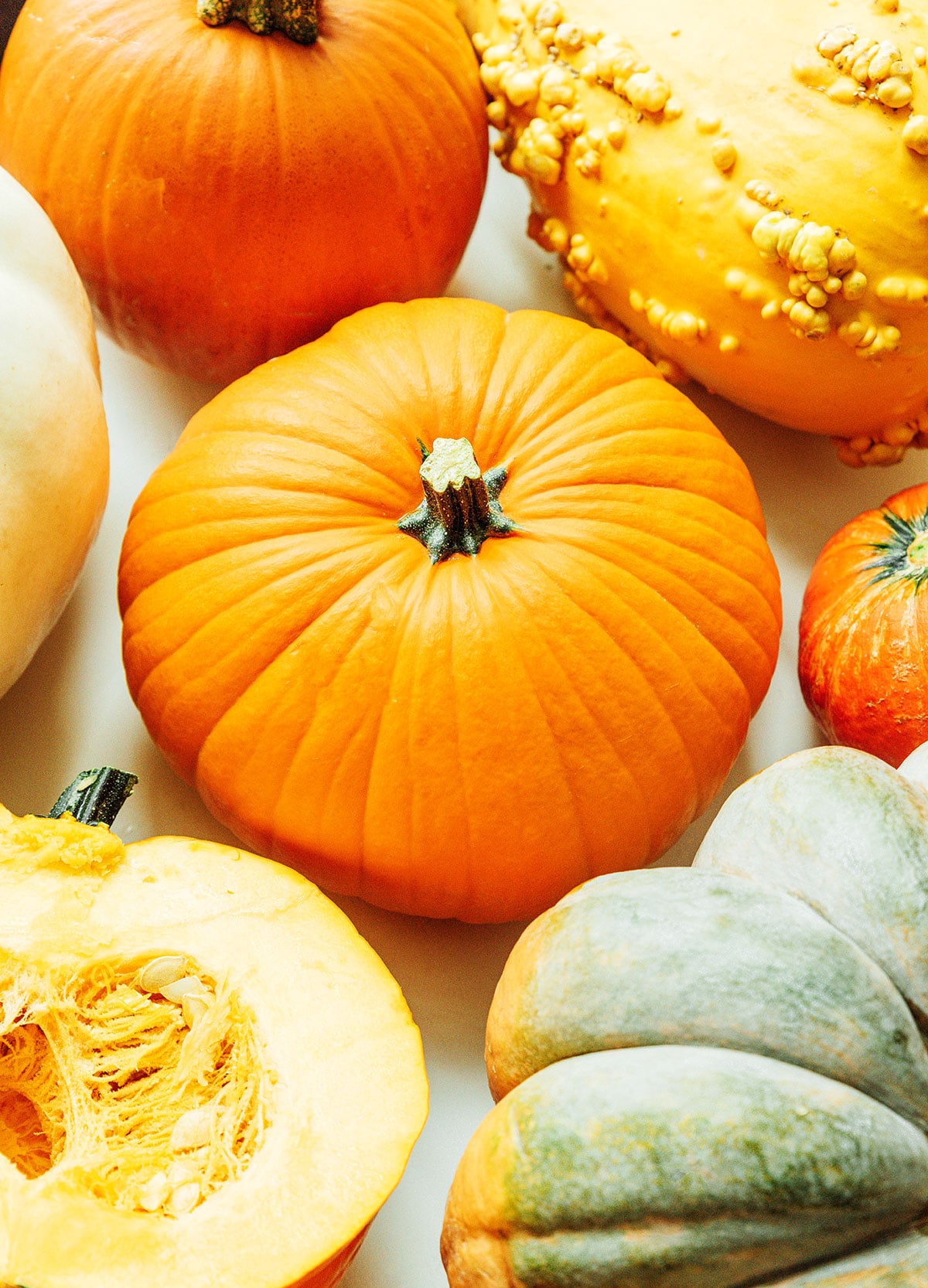
How to Store Pumpkins
Pumpkins enjoy that cool, crisp autumn weather (who doesn’t?), and can be stored for up to a year in a dark, cool environment. It’s best to store your pumpkins outside somewhere shaded, protecting them from frost and direct sunlight.
How to Cook Pumpkin
Cooking pumpkin is a lot like cooking spaghetti squash. Halve it, scoop out the seeds and gunk, then cook. There are a few ways to cook pumpkin:
How to Bake Pumpkin: Place cut side down and bake at 350° F (175°C) for about 1 hour, or until inside is fork-tender. Allow to cool slightly, then scoop out the pumpkin innards with a spoon and toss out the tough rind.
How to Boil Pumpkin: Cut the pumpkin into chunks and boil for 20 to 30 minutes until tender.
How to Cook Pumpkin Seeds: Don’t let the seeds go to waste! Rinse them off, let them dry, spread them onto a baking sheet and sprinkle them with some salt and a dash of olive oil. Bake at 275°F (135°C) for 10 to 15 minutes until lightly browned.
How to Make Pumpkin Puree: Here’s how to make your own pumpkin puree!
Feed Fido: Pumpkins are dog-safe and make a healthy addition to most canine diets! They can benefit from pumpkin puree, or even just chinks of pumpkin as a treat.
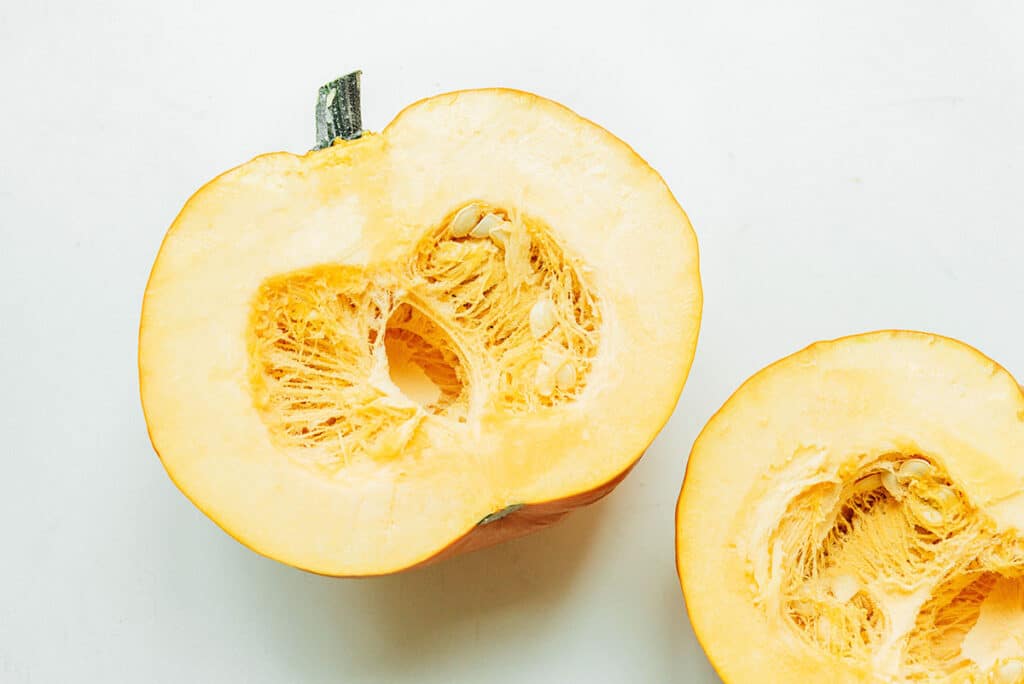
Different Pumpkin Varieties
While you’ll most commonly see bright orange pumpkins donning the front porch stoops of homes across the country, the world of pumpkin varieties goes much deeper! They come in every color of the rainbow, from pink, red, orange, and yellow to green, blue, gray, and white! Let’s look at five different types (or check out our full list of types of pumpkins here).
Traditional Orange Pumpkins
These are the classics, perfect for eating or carving into Jack-O-Lanterns. And while their bright and large surface area makes them great for the latter, they also taste pretty darn good! Their flavor is mild and less sweet than other varieties.
Choose from roasting the entire thing in the oven, using it in casseroles or soups, or turning it into a puree for using in your favorite pumpkin recipe! Just be sure to leave out the center goo and the seeds – you don’t want a crunchy puree!
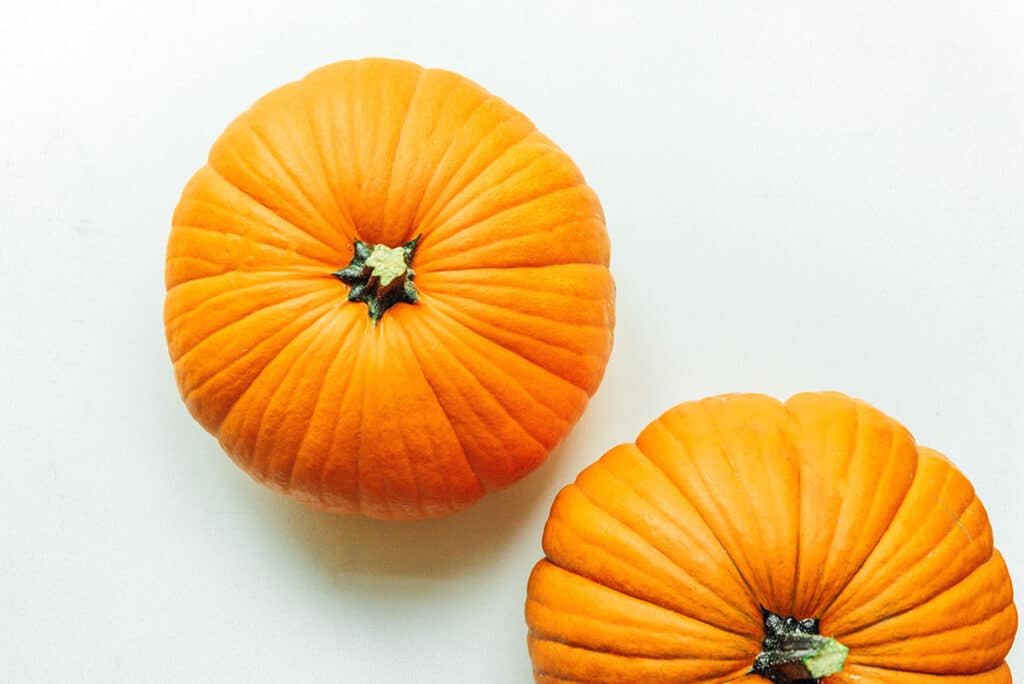
Pie Pumpkins
Pie pumpkins come in the same bright orange shade as traditional pumpkins, but they’re smaller and rounder. As their name suggests, this variety is perfect for baking! Their sweet flavor makes them great for pureeing and using in pies, muffins, cupcakes, you name it.
Thanks to their dense center, they’re great for dicing up and using in cooking. They’re not as stringy as traditional pumpkins!
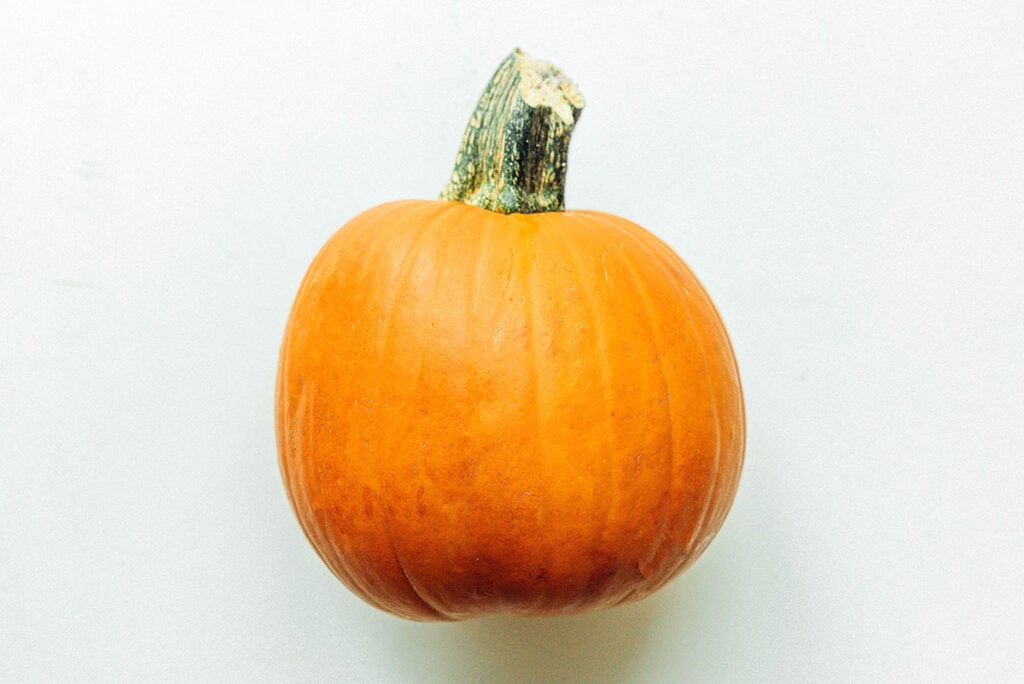
White Pumpkin
Also called lumina, ghost, or full moon pumpkins, this cute variety (can a pumpkin be cute?) is perfect for both decoration and cooking. With an earthy flavor, white pumpkins are quite similar cooking-wise to butternut squash. You can use them in a number of ways and enjoy in everything from salad, soup, and casserole to waffles, muffins, and quesadillas!
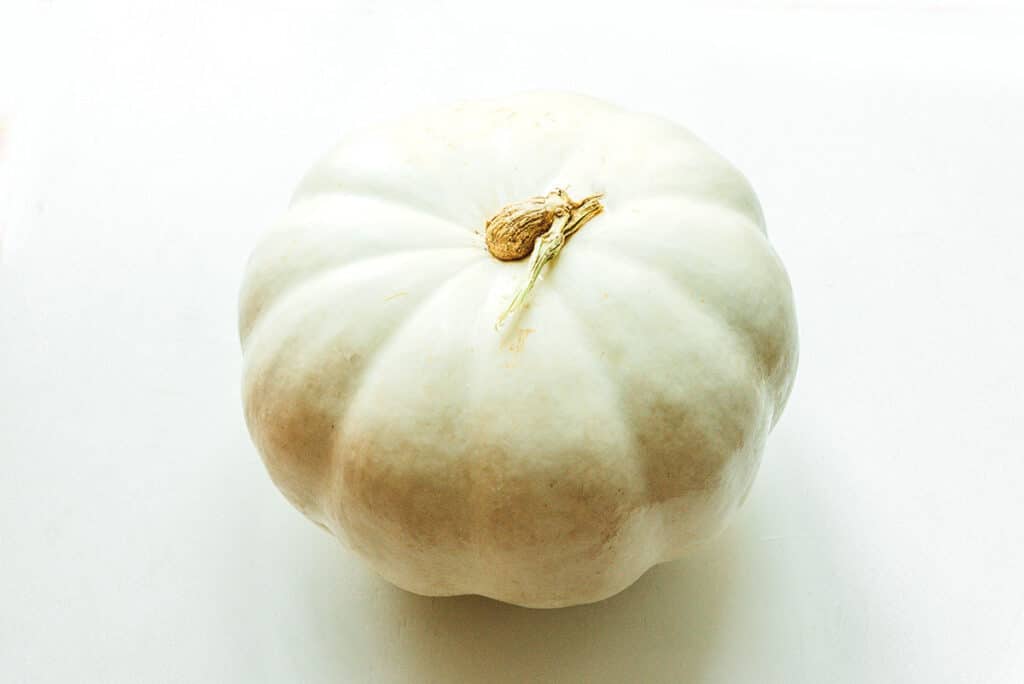
Fairytale Pumpkins
Apart from looking so cute in a holiday display, fairytale pumpkins are great for eatin’! This variety can be used either raw or cooked and works well with a number of cooking methods — boiling, roasting, or baking.
These have a sweet flavor, making the pieces great for using in salads or eating with your favorite fruit dip!
Use them in your next batch of pumpkin bread with cream cheese icing, and thank me later.
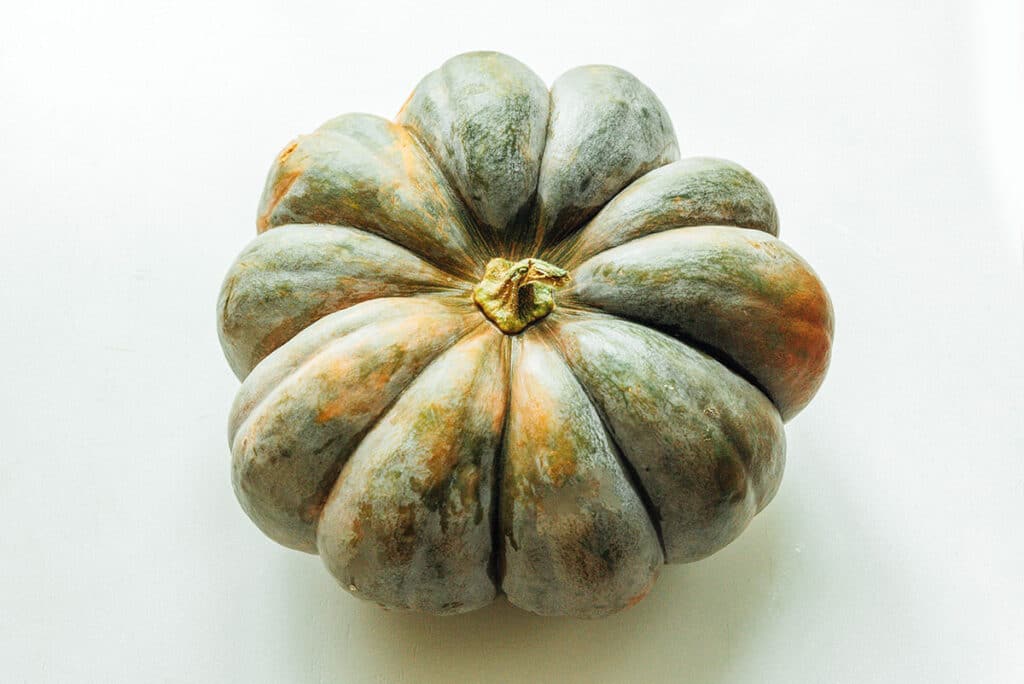
Pumpkin Nutrition Information
per 1 cup of pumpkin cubes (116g)
- Calories: 30
- Carbohydrates: 8g
- Protein: 1g
- Fat: 0g
- 197% DV of vitamin A: Provides the provitamin version of this fat-soluble vitamin, meaning it comes from a plant source and your body converts the plant pigment into active Vitamin A. It is essential in many components of healthy vision, as well as immunity and cell growth/differentiation.
- 17% DV of vitamin C: A water-soluble vitamin that acts as an antioxidant to fight against potentially damaging free radicals (molecules with unshared electrons that float around wreaking havoc) and an important cofactor in collagen synthesis.
- 11% DV of potassium: A key mineral and electrolyte involved in countless processes, including healthy nervous system functioning and contraction of the heart and muscles.
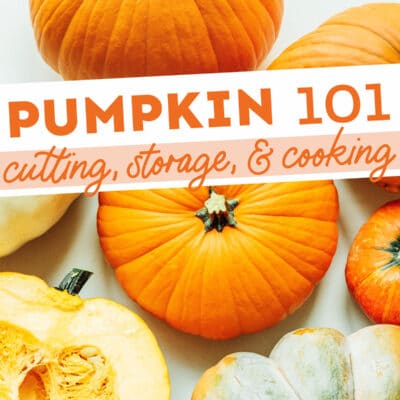
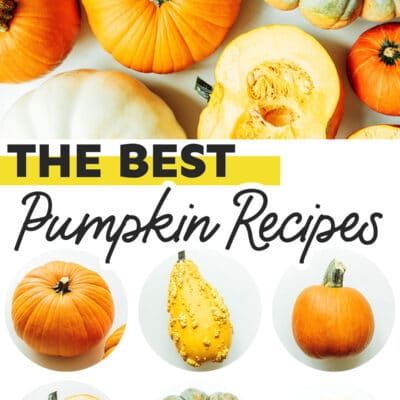
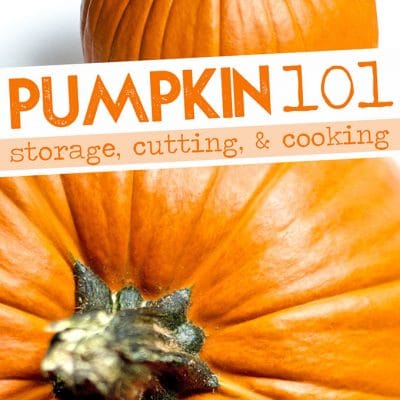
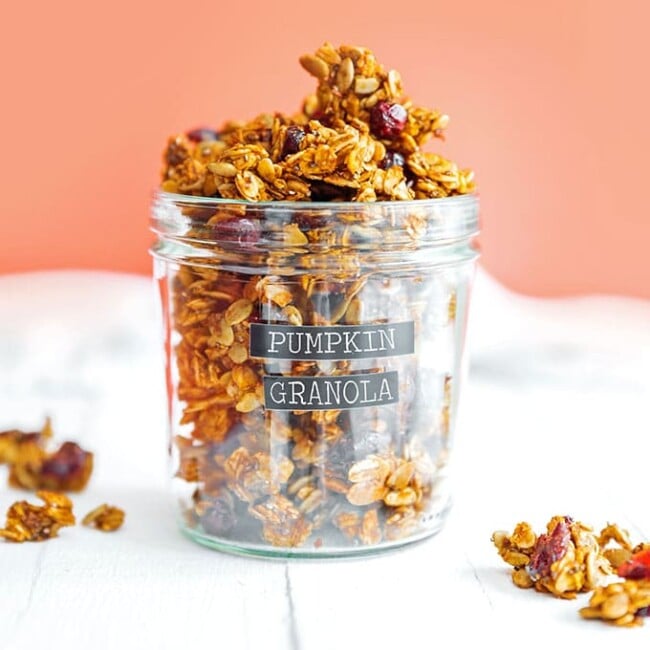
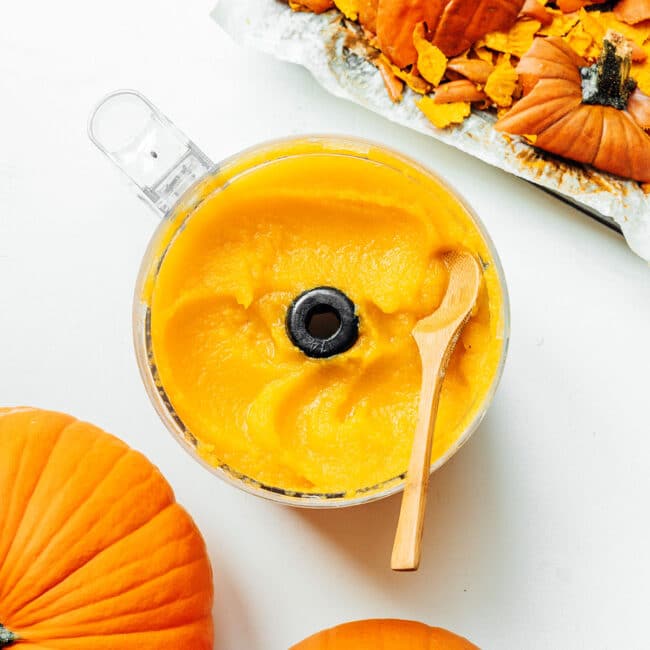
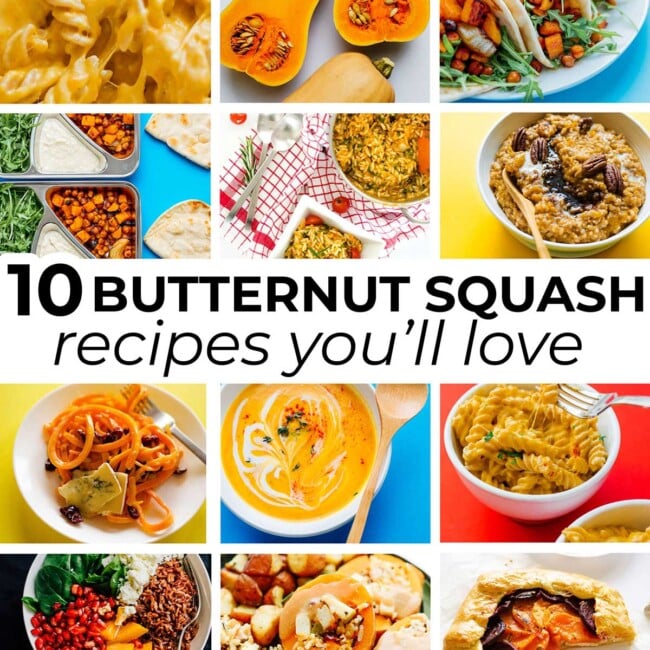
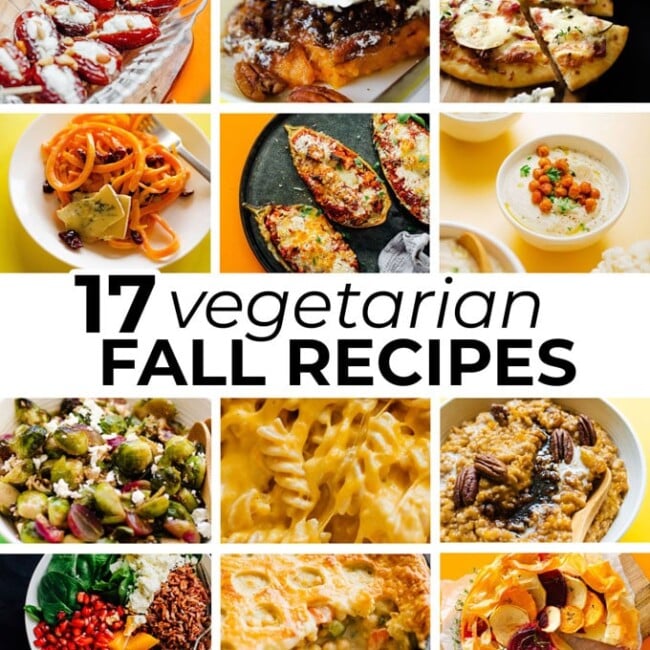
GW says
Sarah, this is a great post. Thanks. We have always thrown out pumpkins after Halloween. What a waste, as long as they aren’t carved, why not cook them. Love your easy recipes BTW.
Sarah says
Exactly! Stopping food waste, one jack-o-lantern at a time 😀